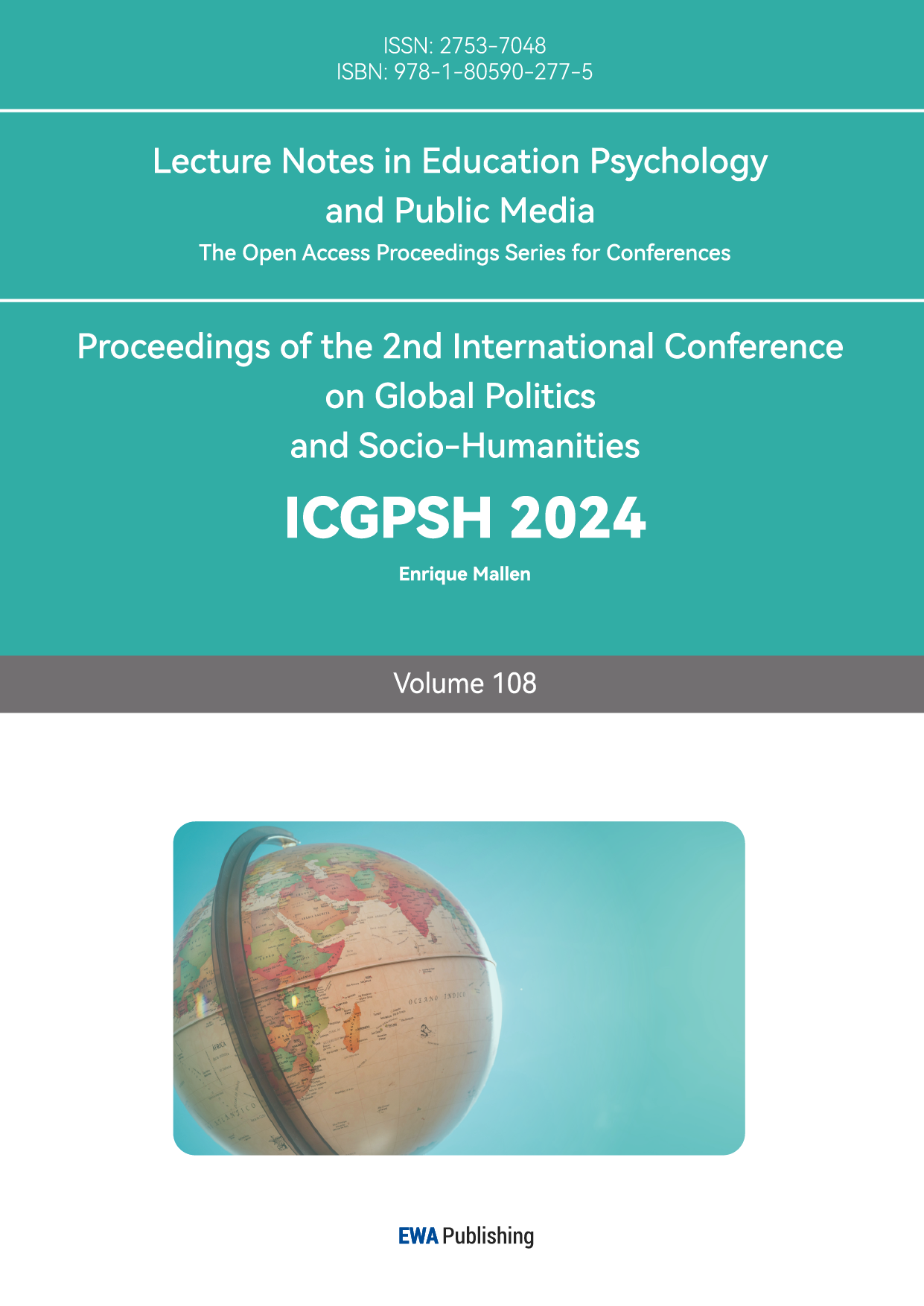References
[1]. Zhang, H. , Xu, H. , Song, F. , Xu, W. , Pallard-Borg, S. , & Qi, X. (2017). Relation of socioeconomic status to overweight and obesity: a large population-based study of Chinese adults. Annals of Human Biology, 44(6), 495–501.
[2]. Li Yaoyue, Wang Guixin. The Impact of Socioeconomic Factors on Obesity Among Chinese Residents [J]. Population and Development, 2022, 28(05): 107-125.
[3]. Mao Fengfu, Yao Jianfeng. Urbanization and "Fat China": Income, Income Inequality, and BMI [J]. Business Economics and Management, 2015, (04): 84-96. DOI:10. 14134/j. cnki. cn33-1336/f. 2015. 04. 009.
[4]. Liang Y, Qi Y. Developmental trajectories of adolescent overweight/obesity in China: socio-economic status correlates and health consequences. Public Health. 2020 Aug;185:246-253. doi: 10. 1016/j. puhe. 2020. 05. 013. Epub 2020 Jul 17. PMID: 32688100.
[5]. WU Qiuxiang, CUI Sheng. Road to "Counterattacks" of Rural Students at Universities: An Empirical Study Based on Beijing College Students Panel Survey. Journal of East China Normal University (Educational Sciences), 2019, 37(1): 124-136. DOI: 10. 16382/j. cnki. 1000-5560. 2019. 01. 014.
[6]. He, Z. (2007). An Analysis of the Affordability of Higher Education Costs for Rural Families in China [J]. Problems of Agricultural Economy, (06), 40-43+111.
[7]. Han, R. (2011). A Study on the Relationship Between Rural Household Income and Higher Education Expenditure: A Case Study of 300 Samples in County S, Shanxi Province [D]. Henan: Henan Normal University. DOI:10. 7666/d. Y1960945.
[8]. Rogol, A. D. , Clark, P. A. , & Roemmich, J. N. (2000). Growth and pubertal development in children and adolescents: Effects of diet and physical activity. The American Journal of Clinical Nutrition, 72(2), 521S-528S. https://doi. org/10. 1093/ajcn/72. 2. 521S
[9]. Guo, S. S. (2016). The timing and tempo of puberty in relation to body composition in youth. Annals of the New York Academy of Sciences, 1382(1), 44-54.
[10]. Biro, F. M. , & Wien, M. (2010). Childhood obesity and adult morbidities. American Journal of Clinical Nutrition, 91(5), 1499S-1505S. https://doi. org/10. 3945/ajcn. 2010. 28701B
[11]. Ahmed, M. L. , Ong, K. K. , & Dunger, D. B. (2009). Childhood obesity and the timing of puberty. Trends in Endocrinology & Metabolism, 20(5), 237-242.
[12]. James, W. P. T. , Leach, R. , Kalamara, E. , & Shayeghi, M. (1999). The worldwide obesity epidemic. Obesity Research, 7(S1), 1S-4S.
[13]. Zhang, Y. , & Wang, S. (2010). Socio-cultural influences on physical health: Body image and body weight in Chinese society. Journal of Health Psychology, 15(8), 1077-1085.
[14]. Jiang, J. , Xia, Q. , & Ding, X. (2018). Gender differences in emotional eating among Chinese adolescents: The role of self-esteem and body dissatisfaction. Eating Behaviors, 31, 80-85.
[15]. Liu, Y. , & Fang, H. (2016). Chinese adolescents' weight perception and psychological well-being: The role of cultural factors. Child and Adolescent Psychiatry and Mental Health, 10, 29. https://doi. org/10. 1186/s13034-016-0119-3
[16]. Wang, Y. , Mi, J. , Shan, X. , Wang, Q. J. , & Ge, K. Y. (2018). Is China facing an obesity epidemic and the consequences? The trends of obesity and chronic disease in China. International Journal of Obesity, 31(1), 177-188. https://doi. org/10. 1038/sj. ijo. 0803354
[17]. Sun, J. , & Dunne, M. P. (2011). The influence of student lifestyle factors on stress and academic performance in Chinese adolescents. Journal of Youth and Adolescence, 40(6), 670-679.
[18]. Liu, Y. , Sun, J. , & Dunne, M. P. (2023). Academic stress and eating behaviors in Chinese adolescents: The mediating role of emotional eating. Eating Behaviors, 41, 101482.
[19]. Chen, X. , Sekine, M. , Hamanishi, S. , Yamagami, T. , & Kagamimori, S. (2020). The association between stress and eating behaviors among students in China. Nutritional Neuroscience, 23(10), 751-759. https://doi. org/10. 1080/1028415X. 2019. 1706105
[20]. Xie, J. , Wang, J. , & Zhang, S. (2023). Adolescent stress and its association with stress-related eating behaviors and weight gain: A cross-sectional study in China. Nutrients, 15(2), 272. 2
[21]. Zhang, R. (2017). An Investigation of Obesity Rates and Influencing Factors Among University Students in Four Different Universities in Shenyang [C]//Chinese Society of Exercise Physiology, Proceedings of the 2017 Academic Symposium on "Student Physical Health and Exercise Physiology". Shenyang Sport University, 2017:2.
[22]. Liang, J. , Zhang, F. , Pan, W. , et al. (2008). An Investigation and Analysis of University Students' Cognition of Obesity and Weight Loss Behavior [J]. Modern Preventive Medicine, (15), 2918-2919



